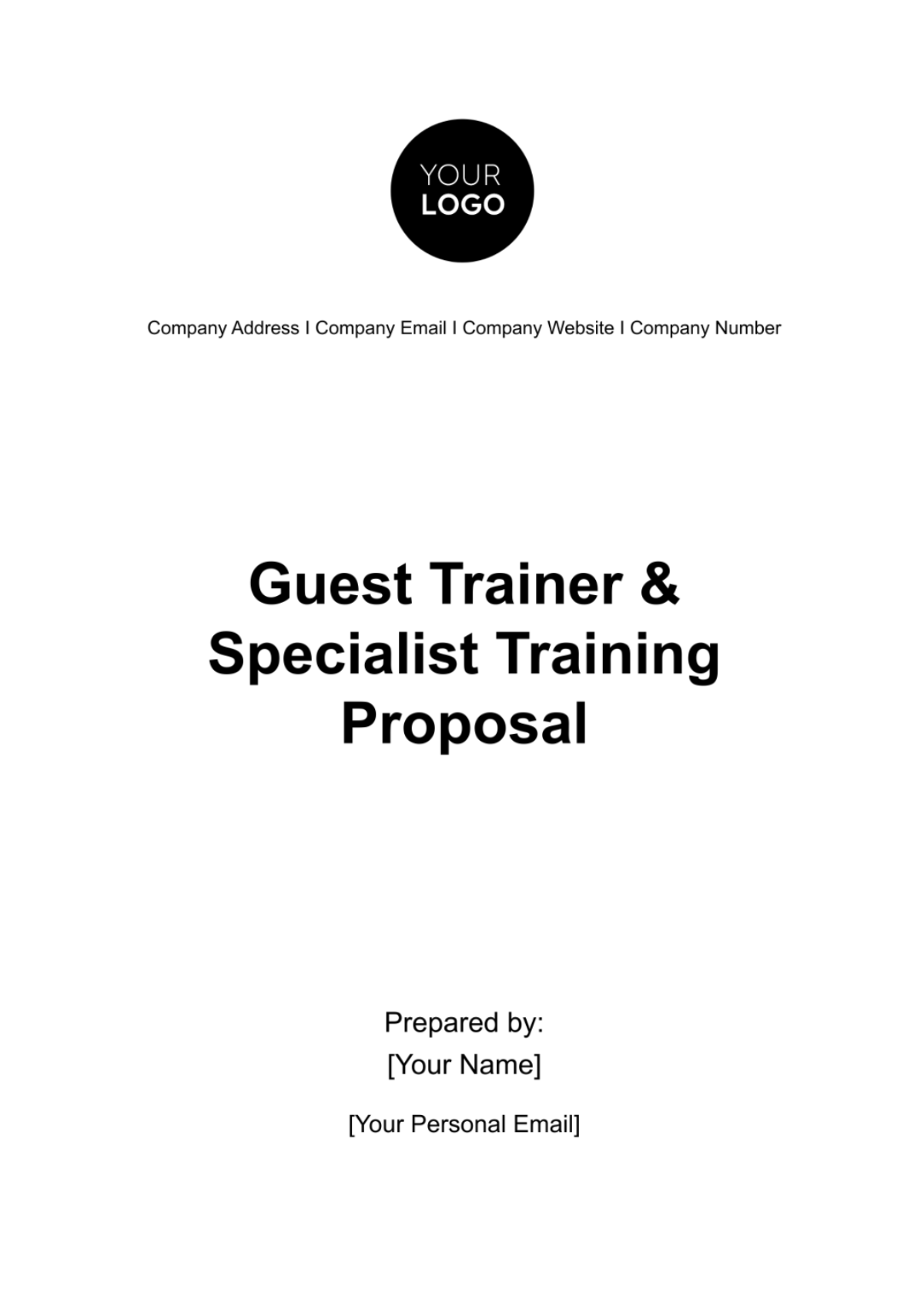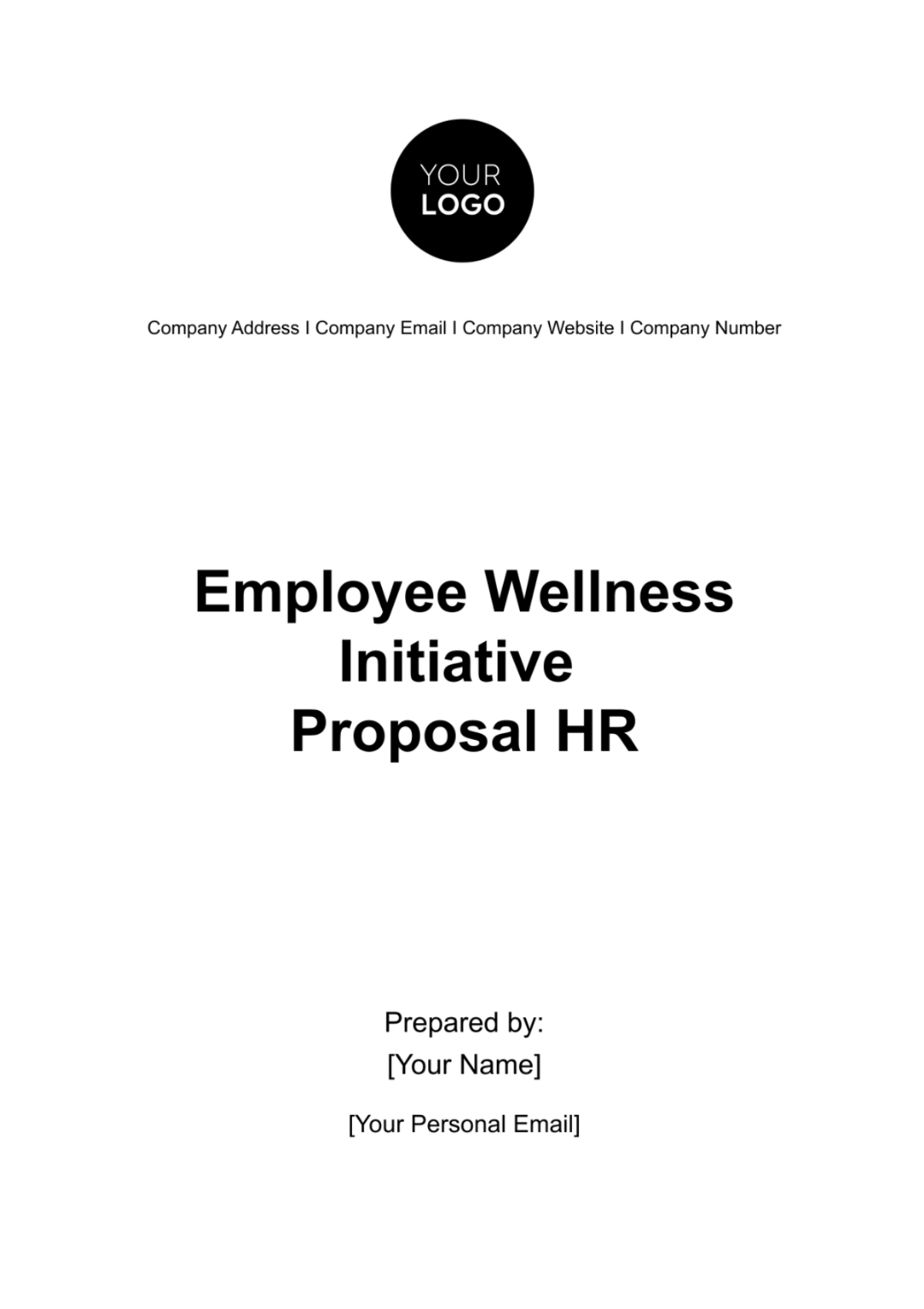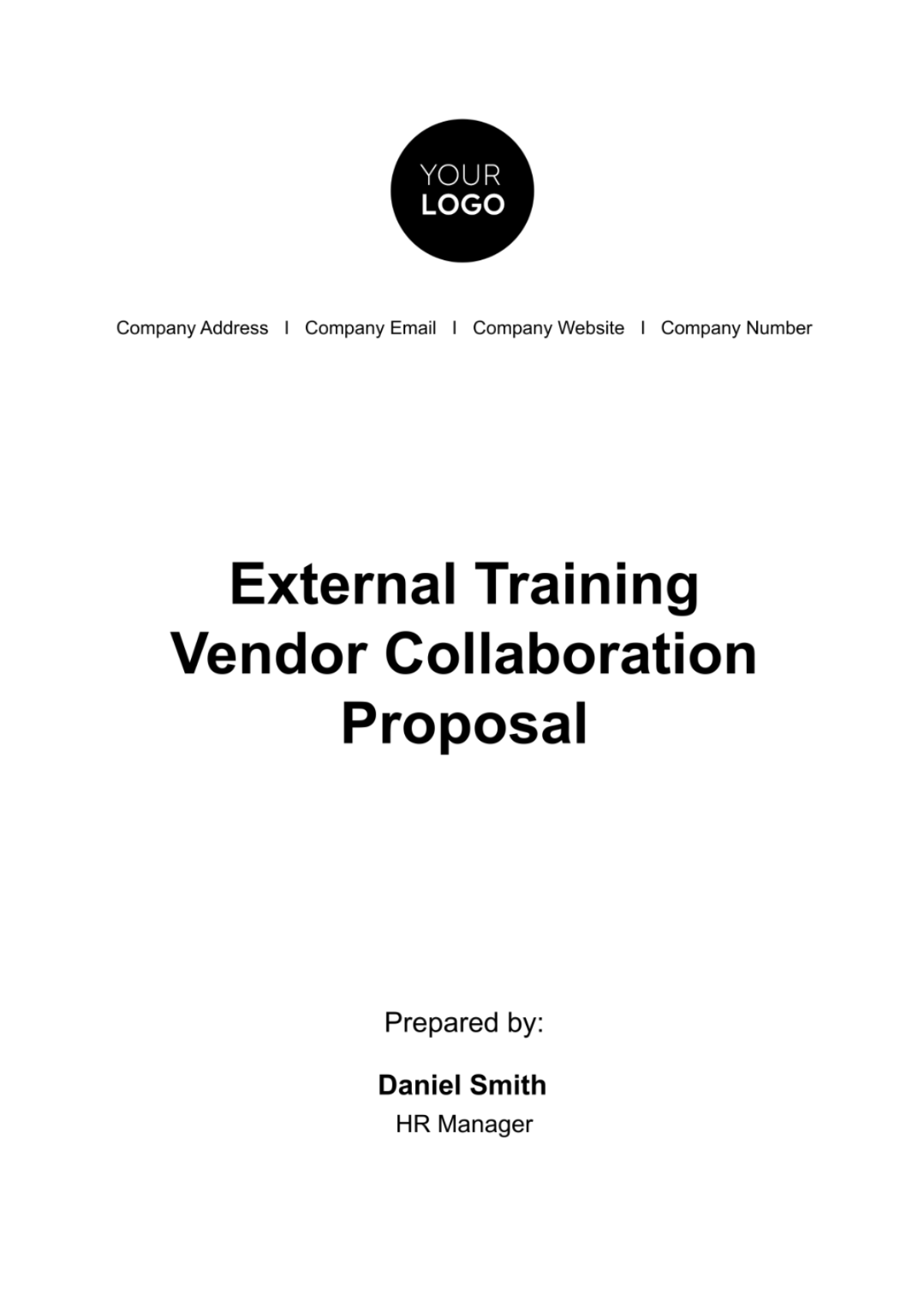Performance Improvement Proposal
TABLE OF CONTENTS
Performance Improvement Proposal .........................................................................1
TABLE OF CONTENTS ......................................................................................................2
1. Introduction ...................................................................................................................3
1.1 Background and Context ..............................................................................................3
1.2 Objectives and Goals ..................................................................................................3
2. Scope and Focus ..........................................................................................................4
2.1 Scope and Focus Details .............................................................................................4
3. Analysis and Assessment .............................................................................................5
3.1 Current Performance Analysis .....................................................................................5
3.2 Root Causes Analysis .................................................................................................5
3.3 SWOT Analysis ...........................................................................................................6
4. Proposed Actions and Strategies ..................................................................................6
4.1 Action Plan ..................................................................................................................6
4.2 Resource Requirements ..............................................................................................7
4.3 Additional Resources ..................................................................................................7
5. Risk Assessment ...........................................................................................................8
5.1 Identification of Risks ..................................................................................................8
5.2 Mitigation Strategies ...................................................................................................8
6. Measurement and Key Performance Indicators (KPIs) ..................................................9
6.1 Defined Metrics ...........................................................................................................9
6.2 Monitoring and Reporting ...........................................................................................9
7. Implementation Plan .....................................................................................................9
7.1 Milestones ...................................................................................................................9
7.2 Deadlines ...................................................................................................................10
7.3 Dependencies ............................................................................................................10
8. Evaluation and Review ................................................................................................10
8.1 Periodic Reviews ........................................................................................................10
8.2 Success Criteria ........................................................................................................10
9. Conclusion ..................................................................................................................10
10. Appendices ...............................................................................................................11
10.1 Supporting Documents .............................................................................................11
Introduction
1.1 Background and Context
The Performance Improvement Proposal is driven by a critical need to address specific performance challenges and capitalize on opportunities within [Your Company Name]. This document outlines the background and context of the situation, supported by relevant data and facts.
In recent months, our customer satisfaction ratings have seen a notable decline, accompanied by an increase in customer complaints regarding product quality and delivery times. These challenges have prompted a thorough examination of our current performance and the development of a strategic improvement plan. It is imperative that we address these issues promptly to not only regain customer trust but also align our operations with our commitment to delivering exceptional products and services.
1.2 Objectives and Goals
Objective 1: | Enhance Customer Satisfaction |
Measurable Outcome: | Increase our Net Promoter Score (NPS) by 15 points within the next fiscal year. |
Achieving this objective will contribute to the company's broader goals and strategies by solidifying our reputation for outstanding customer service. A higher NPS signifies improved customer loyalty and advocacy, ultimately leading to increased revenue and market share. Moreover, it aligns with our mission to provide exceptional experiences for our customers, which is a core element of our strategic vision.
Objective 2: | Streamline Operational Efficiency |
Measurable Outcome: | Reduce production costs by 10% over the next two quarters. |
The attainment of this objective aligns with the overarching mission and strategy of the organization by enhancing our competitive edge. A 10% reduction in production costs will bolster our profitability, making us more competitive in the market. Furthermore, it supports our strategic commitment to sustainability by minimizing resource consumption while maintaining product quality and delivery efficiency.
Scope and Focus
The scope of this Performance Improvement Proposal encompasses the areas of our organization where performance enhancements are most needed. It is vital to define the boundaries of this initiative, clarifying which aspects of performance will be targeted and whether it involves the entire organization, specific departments, teams, or projects.
2.1 Scope and Focus Details
The scope of this proposed improvement initiative is twofold, encompassing both organization-wide and department-specific enhancements. This strategic effort aims to address various aspects of performance to drive overall improvement.
Organization-Wide Scope:
Customer Service Excellence: We will institute training programs and customer-centric policies that span all departments to enhance the overall customer experience.
Operational Efficiency: Streamlining processes and optimizing resource utilization across the organization will be a focal point to reduce costs and improve productivity.
Innovation and Product Development: Encourage cross-functional collaboration to foster innovation and accelerate new product development cycles.
Department-Specific Focus:
Customer Support Department: Prioritize reducing response times and resolving customer issues promptly.
Production Department: Enhance production processes to minimize defects and improve quality control.
Research and Development: Increase investment in research and development to drive innovation and introduce new product lines.
This dual approach ensures that we not only address overarching organizational goals but also tailor our efforts to specific departments and functions where performance improvements are most critical.
Analysis and Assessment
3.1 Current Performance Analysis
Our current performance is a critical aspect of our organization's overall health. To gain a comprehensive understanding, we have examined key performance indicators (KPIs) and data related to various facets of our operations.
Customer Satisfaction Metrics: Over the past six months, our Net Promoter Score (NPS) has declined by 10 points, reflecting a decrease in overall customer satisfaction.
Production Efficiency: Our production processes have experienced a 15% increase in defects, resulting in additional costs and customer complaints.
Employee Engagement: Employee surveys indicate a drop in overall engagement scores, with a 20% increase in reported stress levels.
This data underscores the urgency of our improvement initiative. We must address these issues systematically to ensure the sustained success of our organization.
3.2 Root Causes Analysis
To uncover the root causes of our current performance issues, we conducted a comprehensive analysis, considering both internal and external factors. Our findings reveal several key contributing factors:
Lack of Training and Development: Employees in critical customer-facing roles have not received updated training, leading to inefficiencies and lower customer satisfaction.
Supply Chain Disruptions: External factors such as supply chain disruptions have impacted our production processes, resulting in defects and delays.
Communication Gaps: Ineffective communication channels and processes have hindered collaboration between departments, contributing to both production and customer service challenges.
Understanding these root causes is essential as we develop strategies to mitigate them and drive performance improvement.
3.3 SWOT Analysis
In our SWOT analysis, we've identified the following key factors:
Strengths: | Our strong brand reputation and experienced workforce provide a solid foundation for improvement. |
Weaknesses: | Internal communication issues and gaps in employee training are significant weaknesses that need attention. |
Opportunities: | The market presents opportunities for innovation and expansion, particularly in emerging markets. |
Threats: | Supply chain disruptions and intensifying competition pose threats to our operations. |
Proposed Actions and Strategies
4.1 Action Plan
Action Step 1: | Revamp Customer Service Training Program |
Description: | Overhaul the existing customer service training program to include updated customer engagement techniques and product knowledge enhancement. |
Responsible Party: | HR Department, John Smith - Training Manager |
Timeline: | Initiate within 30 days, with completion targeted within three months. |
Action Step 2: | Optimize Production Processes |
Description: | Implement Lean Six Sigma principles to streamline production processes, reduce defects, and enhance overall efficiency. |
Responsible Party: | Production Department, Sarah Johnson - Operations Manager |
Timeline: | Commence within 45 days, with a phased implementation over six months. |
4.2 Resource Requirements
Budget | |
Customer Service Training Program Overhaul: | $100,000 |
Lean Six Sigma Implementation: | $120,000 |
Marketing Campaign to Promote New Services: | $30,000 |
Total Budget Required: | $250,000 |
4.3 Additional Resources
To ensure the success of the improvement initiatives, the following additional resources will be necessary:
Personnel: Recruit two additional customer service trainers to expedite the training program overhaul.
Technology: Invest in customer relationship management (CRM) software to enhance customer support efficiency.
Equipment: Upgrade machinery and equipment in the production department to align with Lean Six Sigma principles.
Risk Assessment
5.1 Identification of Risks
Resource Constraints: Limited availability of skilled trainers and financial resources could slow down the implementation of the customer service training program.
Resistance to Change: Employees may resist changes in production processes, leading to delays and productivity issues.
External Factors: Supply chain disruptions, market volatility, or unforeseen economic conditions may affect the successful execution of initiatives.
5.2 Mitigation Strategies
Resource Constraints: Prioritize resource allocation, seek external training support, and explore cost-sharing options with other departments.
Resistance to Change: Implement a comprehensive change management plan, including training and communication, to address employee concerns.
External Factors: Establish contingency plans and diversify suppliers to minimize the impact of external factors on operations.
Measurement and Key Performance Indicators (KPIs)
6.1 Defined Metrics
Customer Satisfaction: Measure NPS quarterly, aiming for a 20-point increase within the first year.
Production Defect Rate: Track defects per unit produced, with a target reduction of 25% within six months.
Employee Engagement: Conduct quarterly employee surveys, targeting a 15% improvement in engagement scores.
6.2 Monitoring and Reporting
Progress will be monitored through regular meetings of cross-functional teams responsible for each action step. These teams will provide updates, address challenges, and ensure alignment with the established timeline. A comprehensive progress report will be generated quarterly, highlighting key achievements and areas requiring further attention. Additionally, a centralized dashboard will be established to provide real-time access to performance data.
Implementation Plan
7.1 Milestones
Milestones and Associated Dates | |
Completion of Customer Service Training Overhaul | January 15, 2055 |
Lean Six Sigma Implementation Phase 1 | February 28, 2056 |
Launch of Marketing Campaign | March 15, 2057 |
7.2 Deadlines
Deadlines for Action Steps | |
Training Program Overhaul Completion | February 5, 2055 |
Lean Six Sigma Phase 1 Completion | March 20, 2056 |
Marketing Campaign Launch | April 10, 2057 |
7.3 Dependencies
Action Step 2 depends on the completion of Action Step 1
Marketing Campaign launch depends on Lean Six Sigma Phase 1 completion
Evaluation and Review
8.1 Periodic Reviews
Progress will be reviewed bi-weekly by cross-functional teams responsible for each action step. Quarterly, a comprehensive review involving senior management will assess the overall initiative's progress and make strategic adjustments as needed.
8.2 Success Criteria
Customer Satisfaction (NPS): Achieve a 20-point increase within the first year.
Production Defect Rate: Reduce by 25% within six months.
Employee Engagement: Improve engagement scores by 15% within one year.
Conclusion
In conclusion, this Performance Improvement Proposal outlines a comprehensive plan to address our current performance challenges and capitalize on opportunities for growth. By enhancing customer service, optimizing production processes, and fostering innovation, we aim to position [Your Company Name] for sustained success. The anticipated benefits include increased customer satisfaction, reduced production costs, and improved employee engagement, all of which align with our strategic objectives.
Appendices
10.1 Supporting Documents
Customer Satisfaction Survey Results (Appendix A)
Lean Six Sigma Implementation Plan (Appendix B)
Employee Engagement Survey Findings (Appendix C)
























